The Pinnacle

I’ve heard it said many times about museums, “You can’t see it all in just one hour; you need an entire day!” Well, so far this week at any site that we have visited, whether it be monastery, Church, or ancient ruins, “You can’t see it all in just one hour. You need the entire day.” In fact, You can’t do the Holy Lands in just one week! I could have spent an entire day at every site, if not more. I know now why Egeria spent three years on her pilgrimage. Of course, she went to more places than just the Holy Lands, but I could stay the night at each monastery and still now fully appreciate where I’ve been.

The day started out rainy, but that wasn’t going to stop us from making our way through the Old City, where we spent the entire day. (It did eventually stop raining by late morning) Our first stop was the Monastery of the Birth of the Theotokos. Egeria had said that each site was populated by monastics, and 1600 years later, that much is the same. Two stories down many narrow stone steps, we found the old Church dedicated to the birth of the Theotokos and the place of her birth. Below her house still further was her house. It is important to remember that during the Byzantine Era, Churches were built above the Holy Sites. Following that tradition, at the very top, (the modern day level) is the “new” Church built in 1907. I was allowed to enter into the Holy Altar and offer names for prayer, and then blessed most of the group with blessed oil.
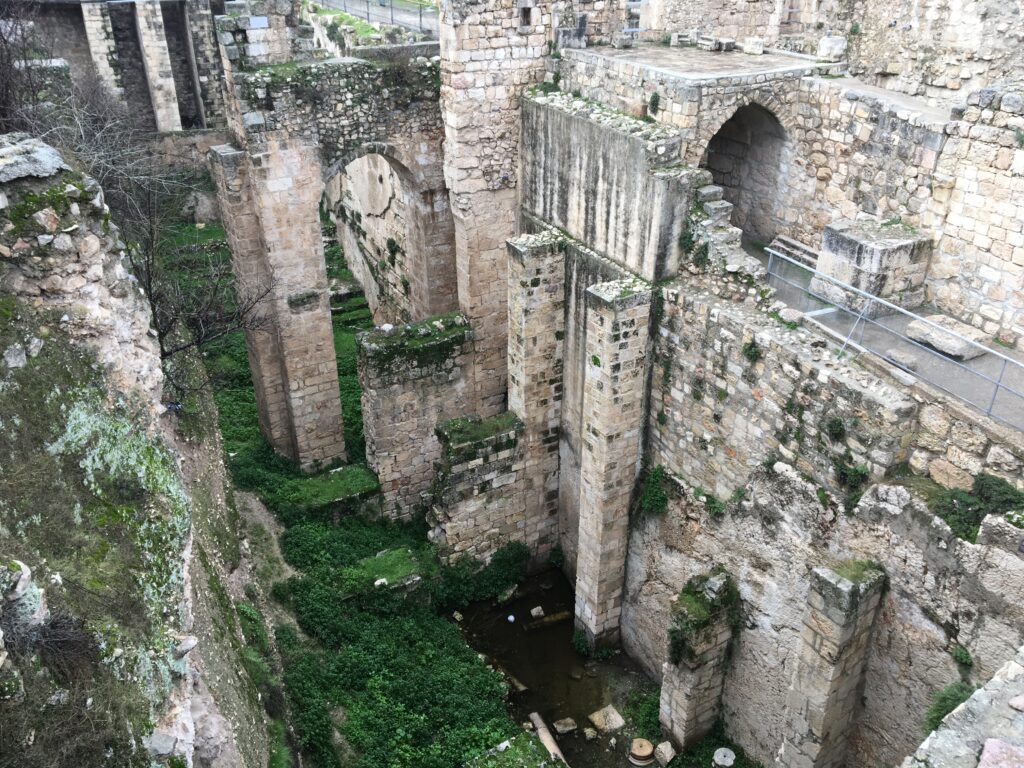
Our next stop was Bethesda. I always pictured the Pool at Bethesda to be a fountain-like structure where the man was healed. I was TOTALLY WRONG, and now that I have seen the actual place, and have seen the levels which the Scripture refers to as porches, I have a different perception. The ‘pool’ was a huge rain water collection point in a valley (more like a gully) which had stairs (the porches?) leading down so the people could come down and be healed once a year. From far above today, the original Church, the Byzantine Church, and Crusader Church ruins can all be seen. At the very top, next to the site is the modern Roman Catholic Church of St Anne. (The back wall of the Church is just feet away from the Church of the Birth of the Virgin Mary.) The photo reveals a good understanding of the original city level below and the upper modern levels. I have to remember Jerusalem was destroyed in 70 AD and was conquered and reconquered over the centuries. Churches built above holy sites, then destroyed to be rebuilt above old Churches, then destroyed to be rebuilt again, and again. The modern Churches in some cases are the third and fourth generation churches “layers” which is why once you enter, you climb down so many stairs.
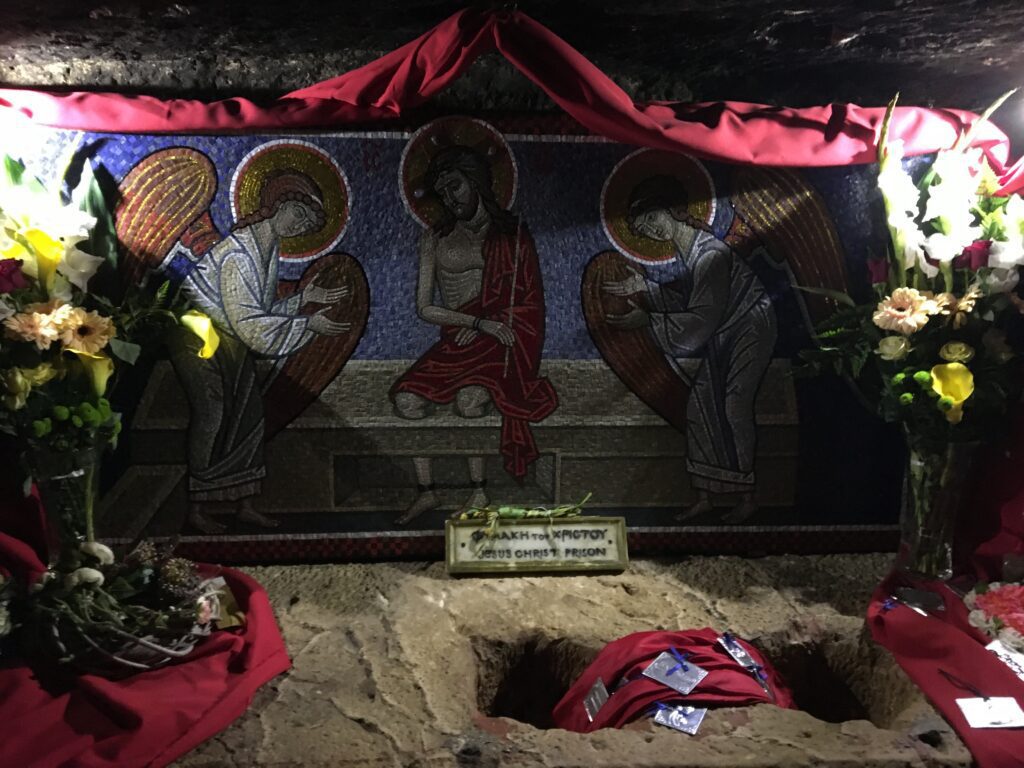
As we visited the Praetorium, I first offered names for prayer in the Holy Altar in the Church above, before descending the narrow stairs into the old prison. It wasn’t your modern jail, that’s for sure. Holes in the rock were used to place your hands and/or your feet through and chained on the other side. TINY caves barely large enough for a body (I would never be able to in prison there) behind bars. In one cave is the Cross which the Patriarch of Jerusalem uses for the Service of the Twelve Gospels during Holy Week, which commemorates the final moments of Christ’s life and Crucifixion.
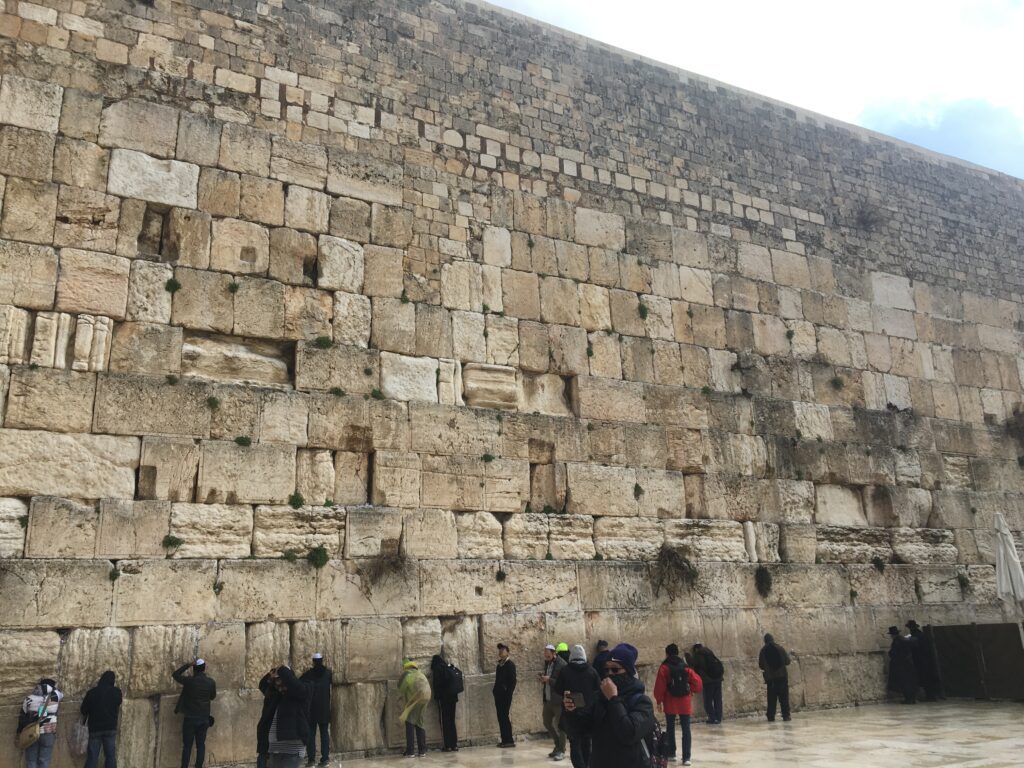
We made a brief side-stop at the Western (so-called Wailing) Wall. This is the ONLY wall of the original Temple Mount still standing, where faithful Jews still today gather for prayer. I offered names for prayer. We cannot forget the Jewish history is our history as Christians. We no longer keep the Jewish Festivals as they have been fulfilled by Christ, but the Temple was the Temple of God, where the Jews (our ancestors) believed per God’s promise that His Glory dwelt there. If God’s glory dwelt in the Temple, I can surely offer prayer at the only remnant of the Temple Mount!
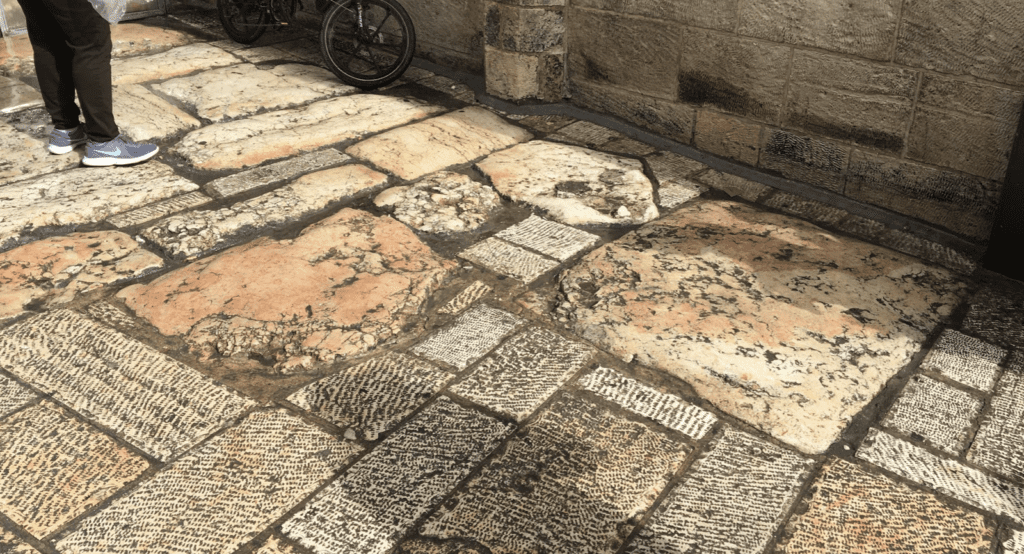
Let me take a moment to discuss the streets of the Old City. The Old City was built basically on three hills, thus the constant up and down we endured today. (I got over 12,000 steps before boarding the bus for the hotel, and the hotel is so large, I might see another 1500 just getting around the hotel.) There are places where we are walking on roads that were in existence during Christ’s time, and other places where the city is several meters higher today. The ONLY piece of the original wall from Christ’s time happens to be the gate through which Christ went to Golgotha. Today the arch has been sealed up by other buildings over the centuries, but I’m not sure that it is a coincidence that the only part remaining was used by God on the way to His death.
The pinnacle of the day, and of course the entire pilgrimage, was the visit to the Church of the Holy Sepulchre. The current complex is more than 1600 years of construction and renovation of shrines and churches throughout history. What was at one time several individual shrines, chapels and the main basilica, are now “all under one roof” of passageways, stairways, and hidden corners.
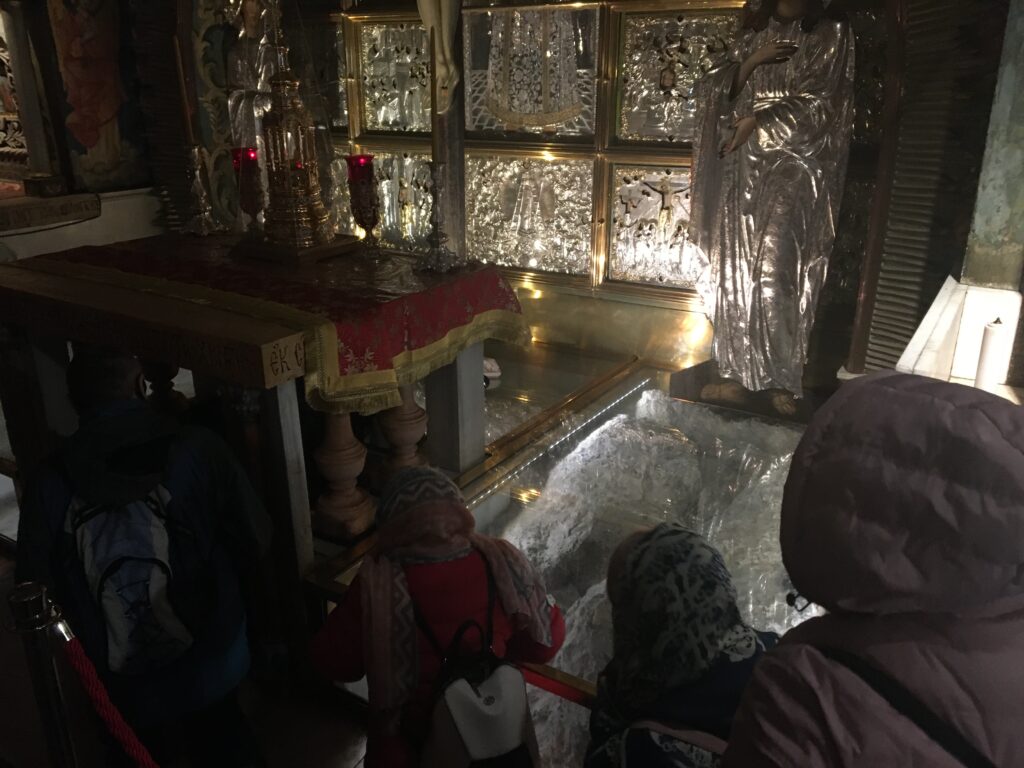
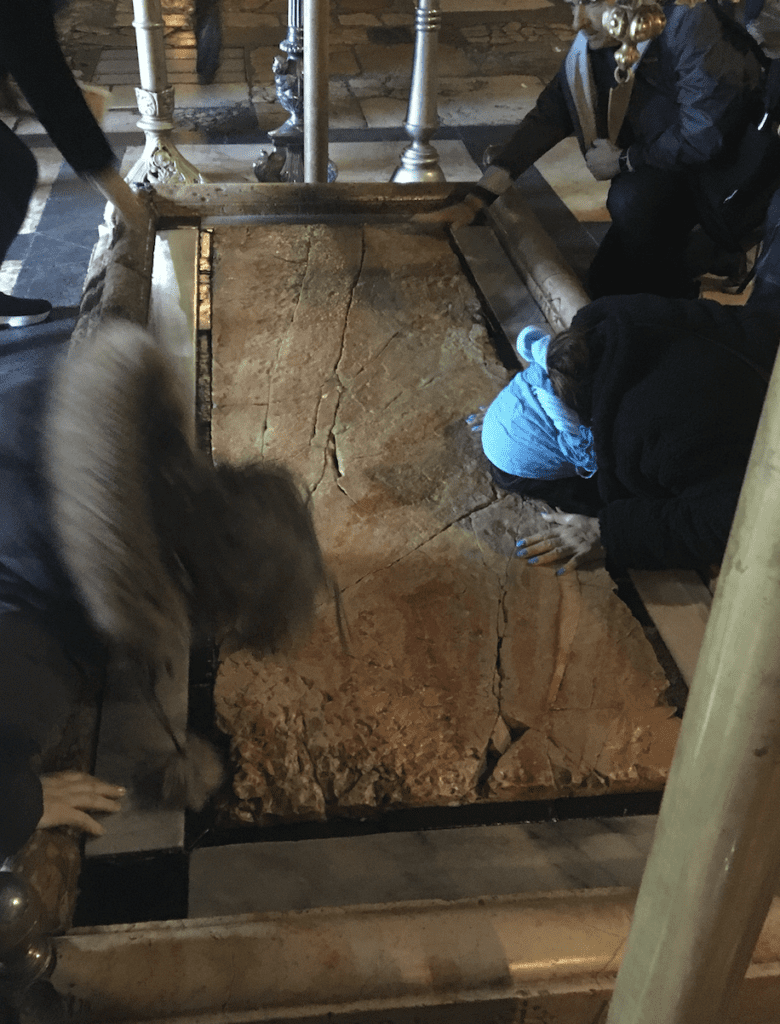

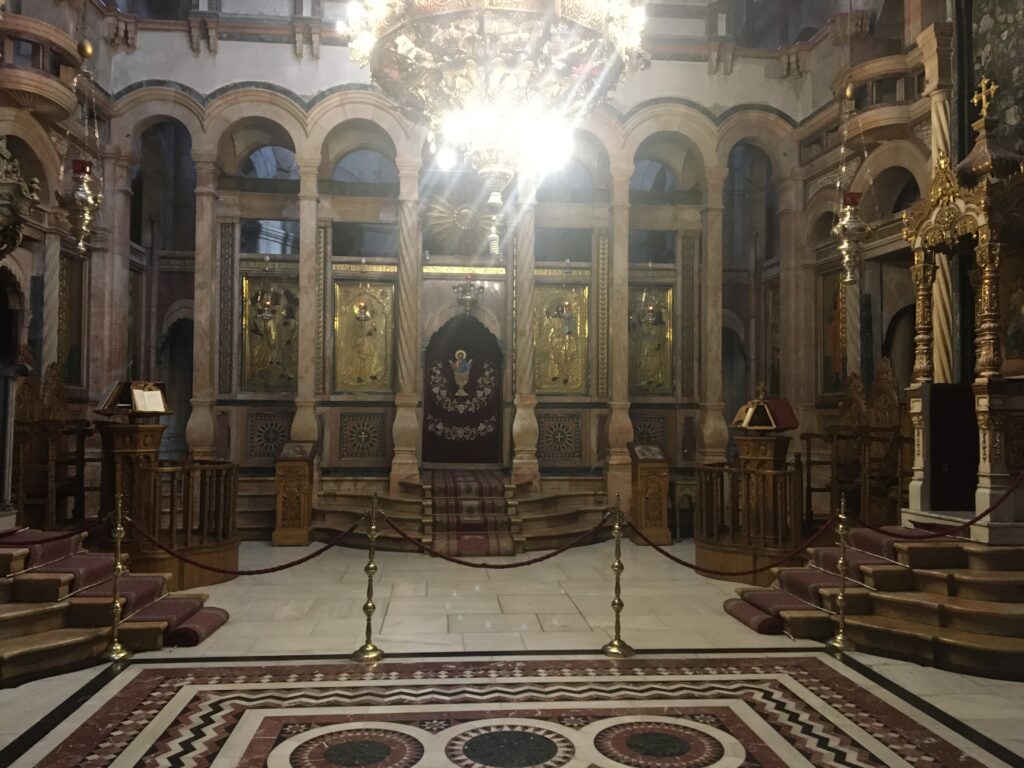
As we entered, the line was “short” so we immediately got in line to venerate the Tomb of Christ. I was able to go live while outside the Tomb, but the signal was weak at times, and video skips in a few places. Before entering the Tomb, I offered names for prayer. Inside the Aedicule (the small marble Church which surrounds the Tomb) was an experience I will never forget, being at the very place where our Lord’s body was buried. In the first room I venerated a piece of the stone on which the Angel stood, and then the Tomb itself. Since it was time for the censing of the entire complex, access to Golgotha was closed, so we spend time visiting some of the perimeter chapels, including one room in which were dozens of saints including a piece of the Holy Cross, the left hand of Saint Basil, and the “skull cap” of Saint John the Baptist. Once the censing was complete, and Golgotha was open, we waited to venerate the place where Christ was crucified. I was able to place my hand inside and feel the very rock that held up His Cross. As we left the complex we venerate the stone on which Christ was anointed for His burial. I did not get a chance to enter each chapel, but we have some extra free time tomorrow, so I may return for more.
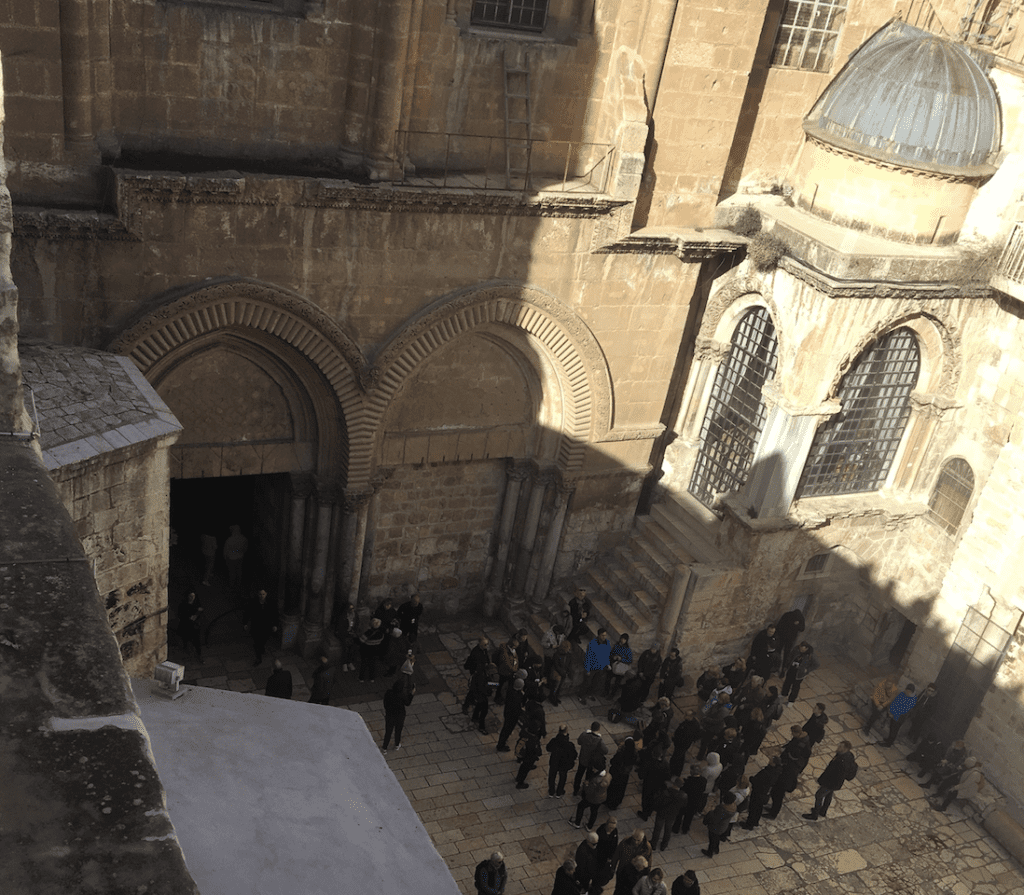
On our way to the Patriarchate of Jerusalem, we passed by the Monastery of Saint Efthymios I was blessed to venerate more relics, including Saint Efthymios, the Holy Cross, Saint John the Baptist and others. The Patriarchate of Jerusalem is actually connected to the Church of the Holy Sepulchre, but we needed to go around the block to enter. From the roof of the Patriarchate, we had a “bird-eye” view of the Chapel of Saint Mary of Egypt and the entrance to the Church of the Holy Sepulchre. The Chapel of Saint Mary of Egypt is outside the original doors to Golgotha, which is the door where she was stopped by the angels from entering. The stairs are still there.
As I returned back to the hotel, all I can say is WOW! I truly believe today to be the pinnacle of my spiritual journey to this point in my life. Not knowing what the future holds for my journey to Christ, at least I can sleep knowing I venerated the Holy Tomb of Our Lord. Tomorrow is our last day in the Holy Lands before returning home, but I won’t be the same person I was when I left.
Tags: holy lands, Pilgrimage